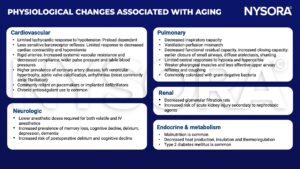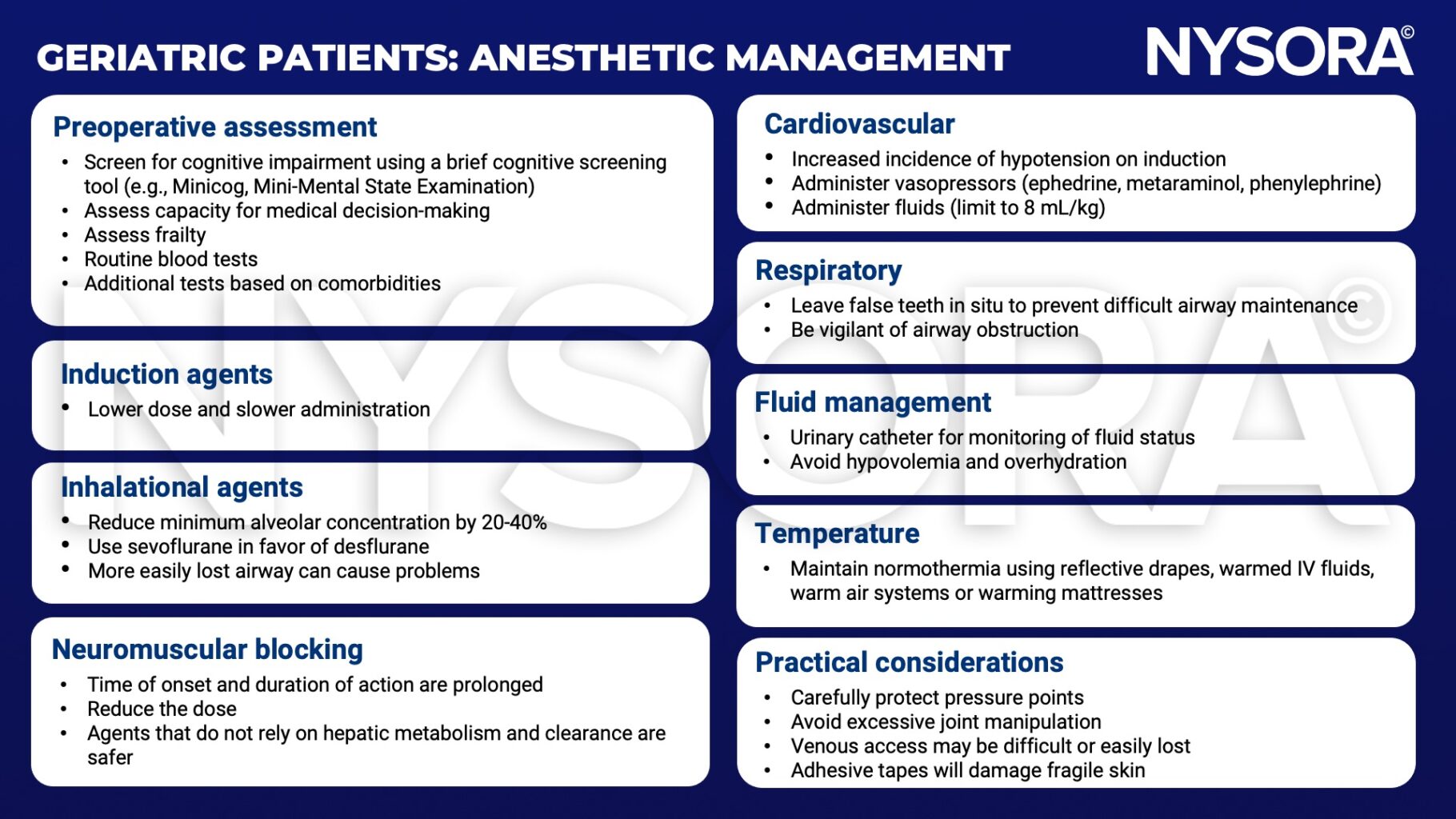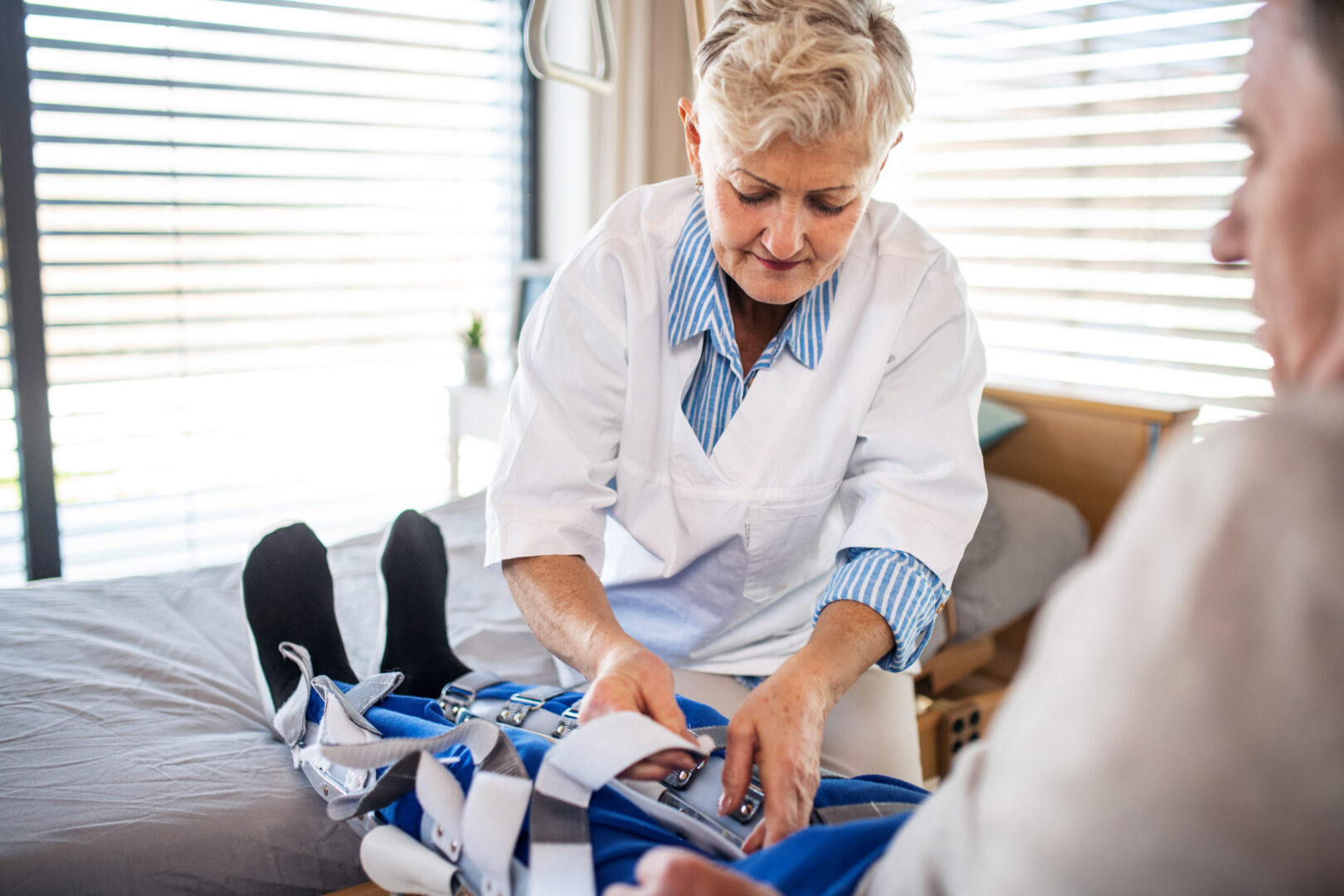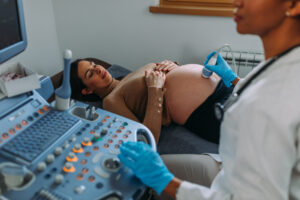Learning objectives
- Describe the physiological changes associated with aging
- Manage geriatric patients presenting for surgery
Background
- Geriatric patients often present with conditions requiring surgery
- Age increases perioperative risks associated with anesthesia
- Geriatric patients have a greater risk of perioperative morbidity and mortality
Physiological changes

Common surgeries in the elderly
- Cataract surgery
- Trans-urethral resection of the prostate
- Hip fracture surgery
- Knee arthroplasty
- Cholecystectomy
- Pacemaker implantation
- Colorectal excision
- Breast excision
Management

Suggested reading
- Staheli B, Rondeau B. Anesthetic Considerations In The Geriatric Population. [Updated 2022 Jun 5]. In: StatPearls [Internet]. Treasure Island (FL): StatPearls Publishing; 2022 Jan-. Available from: https://www.ncbi.nlm.nih.gov/books/NBK572137/
- Murray D, Dodds C. Perioperative care of the elderly. Continuing Education in Anaesthesia Critical Care & Pain. 2004;4(6):193-6.
We would love to hear from you. If you should detect any errors, email us customerservice@nysora.com








